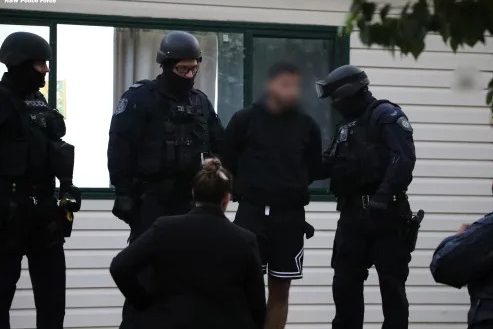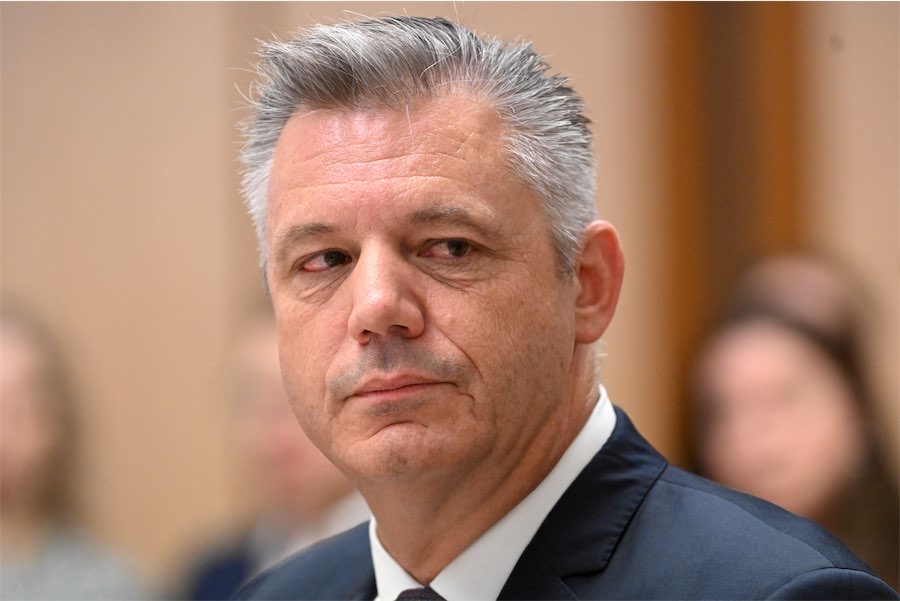YESTERDAY’S National Arts Summit, “Arts Quest — Heights And Hopes” began with a short, stylish fanfare composed by saxophonist John Mackey and rather bureaucratically entitled “A Fanfare for the Enhancement of the Arts.”

Far from it, Archer proclaimed, “Art is still the safest place to have a dangerous conversation.”
Later, in what was easily the most eloquent offering of the day, conductor and music educator Richard Gill poured fire and brimstone on those who would deny the children of Australia a deep and comprehensive music (and by extrapolation other art form) education. “Creativity in schools is being weakened by stultifying standardised assessment,” he thundered.
Gill is natural on the stage and knows exactly what he wants to say. He is also a seasoned arts professional, setting him apart from most of the speakers on the podium, where barely a single representative of the theatre or visual arts communities was to be seen.
And it is notable that the most dangerous conversations take place in the two absent artforms.
As to the audience, which included the patron and founding donor of the hosting organisation, the Australian Talented Youth Project, Sir William Deane, there were one of two visitors from interstate and perhaps 200 to 250 members of Canberra’s arts community, representatives of community arts organisations, music lovers, choristers, art critics and educators, but the only representative present from artsACT was program manager-key arts organisations Mia Ching.
And so to the content of the day.
In a curious move, Prof Don Aitkin was given the task of reading papers by social researcher Hugh Mackay, by economist Prof David Throsby and from Aitkin himself as a long-time board chair of arts organisations, thus seeming to give him the lion’s share of the platform.
Mia Ching, Program Manager-Key Arts Organisations at artsACT, did attend the event.
From Throsby’s paper we heard of the Creative Economy, with arts at the centre and creative ideas emanating from the core. We heard of artists designing websites, performers servicing the corporate sector and the contribution of the arts to the GDP, the first mention of that acronym, which along with the GNP, was to feature heavily in the discussion.
Lisa Colley of the Enterprise Connect Creative Industries Innovation Centre followed a different path, delineating projects at FlindersUniversity Medical Centre and WestmeadHospital where music and sound was used for relaxation or heart conditions for hearing itself into palliative care. There were huge savings to made in the cost of healthcare by bringing the arts in to help, she argued.
Mackay’s paper told us says greatest value of arts is in participation, not observing. We could take a leaf out of the book of the sporting sector, he said, which not only paid for top-class elite players but fostered grassroots participation throughout the country. The arts could serve as an “best way to reduce the pressures of a materialistic society.”
Aitkin, speaking as Aitkin, asked why the art should be funded and how much it should be funded (how long was a piece of string? he asked) contrasted the devolvement of arts funding to statutory authorities nowadays with the historical example of the Medicis.
Monica Penders of ScreenACT talked of balancing content and business in the Australian screen industry, which because of produces expectations of content, and the sheer expense of filmmaking, but was in a different category from the other arts. “Don’t mess with convention,” she warned. This was a point which a contrasting paper from a theatre professional would have come in handy.
After the aforementioned fiery speech from Richard Gill, former opera singer and now academic, Claudia Visca from Vienna, spoke of the international “crossroads” for artists, citing her own example as an American of mixed Italian-Spanish heritage who ended up living in Austria. She illustrated her point by tracing unexpected connections between Australia and Austria, and quoted Leonard Bernstein to the effect that any great artwork revitalises space and time.
In an entertaining interlude of real art, Canberra poet Alan Gould read three works by the absent Les Murray, which included scatological references that had their otherwise sedate audience giggling.
Another interlude followed in which Canberra artist and choreographer Liz Lea performed her prizewinning work, “Bluebird,” swathed in silk.
Deborah Stone from artsHub Australia took the mike to present the results of the recently-conducted National Art Survey.
The top issues emerging from the survey, she said, were funding, opportunity and access (especially community access) the structure of the industry, and how the public sees the arts.
Major concerns expressed by those who responded were making a living, support for mid-career and senior artists, having to keep justifying the arts, too many bureaucratic hoops to jump through, tax reform, Australian content, involvement in the health sector, arts education, business training and the need for an appreciation of the intrinsic value of the arts, which, she said were in danger of being seen as a luxury item. “It’s my job and it matters,” should be the slogan for Australian artists.
The timing of Minister for School Education, Early Childhood and Youth Peter Garrett’s keynote speech, presented after the other speakers but without having heard them, was somewhat unfortunate, as he reiterated some of the old utilitarian arguments as to why the arts are good for the country, arguments which many artists reject.
Garrett spoke of the importance of the creative industries, the $31 billion earnt in terms of GNP, the way exposure to the arts can “enrich the citizens,” and the country’s need of innovation and creativity.
It wasn’t until the concluding Q&A, during which Garrett had the chance to talk about his own background in music, that he really got firing.
During the short Q&A, the frustrations of all those attending the summit emerged. Dance expert Julie Dyson talk about the need flexibility and careers, Aitkin said 99 per cent of artists did something else for a living and Richard Gill talked about the mere 22 music lessons now provided at Melbourne Conservatorium.
It all sounded terribly depressing, said one question from the floor, as if we were “digging ourselves into a hole.”
Canberra music teacher Elaine asked suggestions on how to run her classes on a budget of thousand dollars only per annum. The representative of a Queensland youth arts organisation asked about the goals of the National Cultural Policy and whether it would have any clout.
Canberra voice teacher and director Dianna Nixon asked how to get across the message the arts were “not just about well-being.” An online questioner – the event was live stream throughout – asked about the role of the NBN as a tool in the arts.
The Q&A was followed by a first-class artistic production called “Thank You Canberra,” directed by Liz Lee and featuring the musical, poetic and dance skills of young Australians, with a focus on Canberra.
Summit organiser Dr Jolanta Gallagher invited all those present to participate in a mentor-mentee process by which members of the ACT arts community and organisations could offer their services to guide and advise young and emerging artists.
Brought up in war-torn Poland, Dr Gallagher have experienced the odd experience of deprivation in a culturally enriched environment. She didn’t quite say it was the opposite of that in Australia, but you could tell believe there was any cultural deprivation here, she’d be doing something about it.
Who can be trusted?
In a world of spin and confusion, there’s never been a more important time to support independent journalism in Canberra.
If you trust our work online and want to enforce the power of independent voices, I invite you to make a small contribution.
Every dollar of support is invested back into our journalism to help keep citynews.com.au strong and free.
Thank you,
Ian Meikle, editor




Leave a Reply